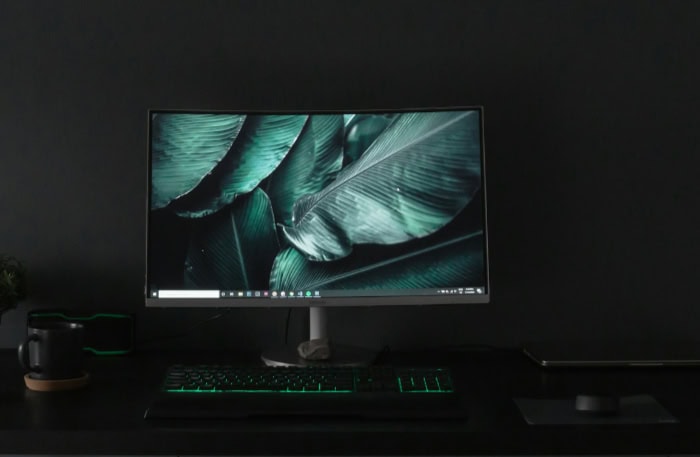Mac vs. PC: Power, Price, and Productivity

Macs and PCs have long been the two dominant forces in personal computing, each with its own dedicated fan base. The debate over which platform reigns supreme has raged on for decades, sparking passionate discussions among tech enthusiasts and everyday users alike.
As technology continues to advance at a rapid pace, the distinctions between these two computing giants have evolved, blurring the lines in some aspects while sharpening them in others.
Performance and Hardware
When comparing Macs and PCs, performance and hardware are crucial factors to consider. Both platforms offer a wide range of options, catering to various needs and budgets.
However, there are some notable differences in how they approach processing power, graphics capabilities, storage, and battery life.
Processing Power and Speed
Macs and PCs both utilize powerful processors from Intel and AMD, ensuring smooth performance for everyday tasks and demanding applications. However, Apple's M1 and M2 chips, designed specifically for Macs, have taken performance to new heights.
These ARM-based processors offer exceptional speed and efficiency, outperforming many comparable Intel-based PCs. On the other hand, PCs have the advantage of more diverse processor options, allowing users to choose from a broader range of performance levels and price points.
Graphics Capabilities
In terms of graphics, Macs and PCs offer distinct advantages. Macs are known for their excellent color accuracy and calibration, making them a favorite among creative professionals in fields like graphic design, video editing, and photography.
Apple's Retina displays deliver crisp and vibrant visuals, enhancing the overall visual experience. PCs, however, excel in the gaming department, with a wider selection of dedicated graphics cards from Nvidia and AMD.
This allows PC users to enjoy cutting-edge gaming experiences with higher frame rates and more advanced visual effects.
Storage Options and Expandability
Storage is another area where Macs and PCs differ. Macs often come with fast and reliable solid-state drives (SSDs) as standard, providing quick boot times and snappy performance.
However, their storage capacities tend to be more limited, and upgrading can be challenging or impossible in some models. PCs, on the other hand, offer greater flexibility in storage options.
Users can easily upgrade their storage by adding larger hard disk drives (HDDs), SSDs, or even multiple drives. This expandability makes PCs more adaptable to growing storage needs and allows for more cost-effective storage solutions.
Battery Life (for Laptops)
When it comes to laptops, battery life is a critical consideration. Macs, particularly MacBooks, are renowned for their impressive battery life.
Thanks to the efficiency of macOS and the optimization of hardware and software, MacBooks can often last a full workday on a single charge. PC laptops have made significant strides in battery life over the years, with many models now offering competitive endurance.
However, the wide variety of hardware configurations and the power-hungry nature of some components can result in more varied battery life across different PC laptop models.
Operating Systems: macOS vs. Windows

At the core of the Mac vs. PC debate lies the comparison between their respective operating systems: macOS and Windows.
These operating systems serve as the foundation for the user experience, offering distinct features, interfaces, and capabilities.
User Interface and Ease of Use
One of the most striking differences between macOS and Windows is their user interfaces. macOS is known for its sleek, intuitive, and visually appealing design. The Dock, which houses frequently used applications and documents, provides easy access to essential tools.
The Finder, macOS's file management system, offers a streamlined way to navigate and organize files and folders. On the other hand, Windows has a more familiar and traditional interface, with the Start menu serving as the central hub for accessing applications and settings.
While both operating systems have their learning curves, many users find macOS to be more user-friendly and easier to navigate, especially for those new to computers.
Built-in Features and Applications
Both macOS and Windows come with a suite of built-in features and applications that cater to various user needs. macOS includes iMovie for video editing, GarageBand for music creation, and Photos for image management.
These applications are well-integrated with the operating system and offer a seamless experience for creative tasks. Windows, in comparison, provides a wider range of built-in tools, such as Photos for basic image editing, Notepad for text editing, and the Microsoft Office suite (although it requires a separate purchase).
Windows also offers a broader selection of third-party applications, giving users more choices for productivity and entertainment.
Update Frequency and Support Lifecycle
Apple and Microsoft have different approaches to updating their operating systems. macOS receives annual major updates, which introduce new features, performance improvements, and security enhancements.
These updates are free and easily accessible through the Mac App Store. Apple also provides regular security updates and bug fixes throughout the year.
In contrast, Windows has a more flexible update cycle, with major feature updates released twice a year. However, these updates can be more disruptive, requiring longer installation times and potential compatibility issues with older hardware and software.
Microsoft offers extended support for its operating systems, typically lasting 10 years from the release date.
Customization Options
When it comes to customization, Windows has a clear advantage over macOS. Windows allows users to extensively personalize their desktop environment, from changing themes and color schemes to modifying system settings and installing custom skins.
This flexibility enables users to tailor their experience to their preferences and needs. macOS, on the other hand, offers limited customization options.
While users can change the wallpaper and adjust some basic settings, the overall look and feel of the operating system remain largely consistent. This consistency contributes to the cohesive and polished aesthetic that Apple is known for, but it may not appeal to users who value greater control over their desktop environment.
Software Ecosystem and Compatibility

The software ecosystem and compatibility of Macs and PCs play a crucial role in determining their suitability for different users and tasks. Both platforms offer a wide range of applications, but there are notable differences in their software libraries, cross-platform capabilities, gaming options, and professional tools.
Available Software for Each Platform
Windows PCs have long held an advantage in terms of software availability. The Windows platform boasts a vast library of applications, ranging from productivity tools and utilities to specialized software for various industries.
This extensive selection is due to Windows' dominant market share, which has encouraged developers to prioritize creating software for this platform. As a result, Windows users often have access to a broader range of options for any given task or need.
Macs, while having a smaller overall software library, still offer a robust selection of applications. The Mac App Store provides a curated collection of high-quality software, and many developers create Mac-specific versions of popular applications.
Additionally, the Mac ecosystem is known for its well-designed, user-friendly applications that integrate seamlessly with the operating system.
Cross-Platform Applications
As technology has advanced, the gap between Mac and PC software ecosystems has narrowed, thanks to the increasing prevalence of cross-platform applications. Many popular software suites, such as Microsoft Office, Adobe Creative Cloud, and Google's productivity tools, are now available on both platforms with near-identical functionality.
This cross-platform compatibility has made it easier for users to switch between Macs and PCs or work in mixed-platform environments.
Web-based applications have further bridged the gap between the two platforms. Services like Google Workspace, Dropbox, and Slack function identically on both Macs and PCs, as they rely on web browsers rather than platform-specific software.
This trend has reduced the importance of platform-exclusive software for many users, especially those who primarily work with cloud-based tools.
Gaming Capabilities
Gaming is an area where PCs have traditionally held a significant advantage over Macs. The Windows platform offers a vast library of games, ranging from indie titles to AAA blockbusters.
PCs also benefit from more powerful and customizable hardware options, allowing gamers to build high-performance systems tailored to their needs. Additionally, technologies like DirectX and support for virtual reality headsets have further cemented Windows' position as the preferred platform for serious gamers.
Macs, while not traditionally considered gaming machines, have made strides in recent years to improve their gaming capabilities. The introduction of Apple's Metal graphics API has enabled developers to create more performant games for macOS.
Additionally, services like Steam and GOG have expanded their Mac game libraries, offering a growing selection of titles for Mac users. However, the number and variety of games available for Macs still lag behind those for Windows PCs.
Professional and Creative Software Options
Both Macs and PCs offer a range of professional and creative software options, but they excel in different areas. Macs have long been favored by creative professionals in fields such as graphic design, video editing, and music production.
Software like Final Cut Pro, Logic Pro, and Sketch are exclusive to the Mac platform and are highly regarded in their respective industries. The tight integration between Apple's hardware and software often results in optimized performance for these creative applications.
PCs, on the other hand, offer a wider variety of professional software options across different industries. Fields such as engineering, architecture, and scientific research often rely on Windows-specific software that may not be available on Macs.
Additionally, the open nature of the PC platform allows for greater customization and flexibility in professional environments, making it easier to integrate specialized hardware and software solutions.
It's worth noting that many professional software suites, such as Adobe Creative Cloud and Autodesk products, are available on both platforms with similar functionality. This cross-platform availability has made it easier for professionals to choose between Macs and PCs based on other factors beyond software compatibility.
Price and Value Proposition

When comparing Macs and PCs, one of the most significant factors to consider is the price and overall value proposition. Both platforms offer a range of options at various price points, but there are notable differences in their approach to pricing, long-term costs, resale value, and included software and services.
Initial Purchase Costs
The initial purchase cost is often the first consideration for many consumers when choosing between a Mac and a PC. Macs are generally known for their premium pricing, with even entry-level models commanding higher prices than comparable PCs.
Apple's MacBook Air, iMac, and Mac Mini lines, while more affordable than their professional counterparts, still tend to be pricier than similarly spec'd Windows machines.
PCs, on the other hand, offer a much wider range of price points. Budget-friendly options are readily available, with many manufacturers producing low-cost laptops and desktops that can handle basic computing tasks.
Mid-range PCs often provide a good balance of performance and affordability, while high-end gaming rigs and workstations can rival or exceed the cost of top-tier Macs.
It's important to note that the higher initial cost of Macs often includes premium build quality, design, and integration of hardware and software. PCs, while potentially less expensive upfront, may require additional purchases for software or accessories to match the out-of-the-box experience of a Mac.
Long-term Maintenance and Upgrade Expenses
Beyond the initial purchase, long-term maintenance and upgrade costs should be factored into the decision-making process. Macs generally have a reputation for reliability and longevity, which can translate to lower maintenance costs over time.
Apple's comprehensive warranty and support services, including the option for AppleCare+, can provide peace of mind and potentially reduce unexpected repair expenses.
However, Macs often have limited upgrade options, particularly in newer models where components like RAM and storage are soldered to the motherboard. This lack of upgradability means users may need to invest in a new machine sooner if their computing needs outgrow their current system's capabilities.
PCs typically offer more flexibility for upgrades and repairs. Users can often replace or upgrade components such as RAM, storage, and graphics cards to extend the lifespan of their machines.
This upgradability can lead to lower long-term costs for users who are comfortable performing their own maintenance and upgrades. However, the quality of components and build can vary widely among PC manufacturers, potentially leading to higher repair costs for lower-quality machines.
Resale Value
Resale value is an often-overlooked aspect of the total cost of ownership. Macs have historically maintained strong resale values, depreciating more slowly than most PCs. This higher resale value can offset the initial higher purchase price if users plan to sell their devices after a few years of use.
The strong resale value of Macs can be attributed to several factors, including brand perception, build quality, and the longer usable lifespan of macOS on older hardware. Apple's control over both hardware and software allows for optimized performance even on older machines, contributing to their longevity.
PCs, while generally having lower resale values, can still retain value well if they are high-quality or specialized machines. Gaming PCs with top-tier components or professional workstations can command respectable prices on the secondary market.
However, the vast majority of consumer-grade PCs depreciate more quickly than Macs, which should be considered when evaluating the total cost of ownership.
Included Software and Services
The value proposition of Macs and PCs extends beyond the hardware to include bundled software and services. Macs come with a suite of pre-installed applications that cover a wide range of tasks, from basic productivity to creative pursuits.
These include Pages for word processing, Numbers for spreadsheets, Keynote for presentations, iMovie for video editing, and GarageBand for music creation. The inclusion of these applications adds value to the overall package, especially for users who might otherwise need to purchase similar software separately.
PCs typically come with fewer pre-installed applications, though this can vary by manufacturer. Microsoft offers basic versions of its Office suite with many new PCs, and some manufacturers include trial versions of antivirus software or other utilities.
However, users often need to purchase or download additional software to match the out-of-the-box capabilities of a Mac.
Both platforms offer cloud services, with iCloud for Macs and OneDrive for Windows PCs. These services provide storage, syncing, and collaboration features, adding value to the overall ecosystem.
The integration of these services is generally smoother on their respective platforms, which can enhance the user experience and productivity.
Integration and Ecosystem

In the modern digital age, the integration and ecosystem surrounding a computing platform are crucial factors to consider.
Both Macs and PCs offer various features and services that extend beyond the core hardware and software, encompassing mobile device synchronization, cloud services, peripheral compatibility, and multi-device workflows.
Mobile Device Synchronization
Apple is renowned for its seamless integration between devices, and Macs are no exception. With the Continuity feature, users can effortlessly sync their iPhone, iPad, and Mac, enabling smooth transitions between devices.
For example, Handoff allows users to start a task on one device and pick it up on another, while iMessage enables seamless messaging across all Apple devices. This tight integration creates a cohesive ecosystem that simplifies workflows and enhances productivity.
PCs, while not having the same level of native integration with mobile devices, still offer various options for synchronization. Microsoft's Your Phone app allows Android users to access their phone's notifications, messages, and photos directly from their Windows PC.
For iPhone users, Microsoft provides the Phone Link app, which enables similar functionality. Third-party applications like Dell Mobile Connect and HP QuickDrop also facilitate file transfer and messaging between PCs and mobile devices.
Cloud Services and Data Management
Cloud services play a vital role in modern computing, enabling users to store, sync, and access their data across multiple devices. Apple's iCloud is deeply integrated into macOS, providing seamless synchronization of files, photos, notes, and other data across Apple devices.
iCloud Drive offers a centralized storage solution, while features like iCloud Keychain securely sync passwords and other sensitive information.
Microsoft's OneDrive is the primary cloud storage solution for Windows PCs, offering similar functionality to iCloud. OneDrive integrates with Windows Explorer, making it easy to access and manage cloud-stored files.
Microsoft 365 (formerly Office 365) extends the capabilities of OneDrive by providing cloud-based versions of popular productivity applications like Word, Excel, and PowerPoint, enabling real-time collaboration and access from any device.
Both Macs and PCs also support a wide range of third-party cloud services, such as Google Drive, Dropbox, and Box, which offer cross-platform compatibility and additional features tailored to specific needs.
Peripheral and Accessory Compatibility
Peripheral and accessory compatibility is another important consideration when choosing between a Mac and a PC. Macs benefit from Apple's control over both hardware and software, resulting in a more streamlined experience with compatible peripherals.
Many accessories, such as printers, scanners, and external storage devices, are designed with Mac compatibility in mind, ensuring smooth functionality without the need for additional drivers or software.
PCs, with their larger market share and more diverse hardware ecosystem, offer a broader range of compatible peripherals and accessories. From keyboards and mice to external GPUs and specialized input devices, PCs cater to a wide variety of needs and preferences.
However, this diversity can sometimes lead to compatibility issues, requiring users to install additional drivers or troubleshoot conflicts.
It's worth noting that the increasing prevalence of USB and Thunderbolt standards has helped bridge the gap between Mac and PC peripheral compatibility. Many modern peripherals are designed to work seamlessly with both platforms, reducing the importance of platform-specific compatibility in some cases.
Multi-device Workflows
As users increasingly rely on multiple devices to complete tasks and manage their digital lives, the ability to create seamless multi-device workflows has become more important. Apple's Continuity features, as mentioned earlier, excel in this regard.
With Universal Clipboard, users can copy and paste content between their Mac, iPhone, and iPad, while Sidecar allows an iPad to function as a secondary display for a Mac. These features, combined with the unified design language across Apple devices, create a cohesive and intuitive multi-device experience.
Windows PCs also offer various features to facilitate multi-device workflows. Microsoft's Your Phone app, in addition to mobile device synchronization, allows users to access their phone's screen directly on their PC, enabling interaction with mobile apps and content.
Windows 10 and 11 also include built-in support for virtual desktops, allowing users to create separate workspaces for different tasks and easily switch between them.
Third-party applications and services, such as Pushbullet, AirDroid, and Logitech Flow, provide additional options for seamless file transfer, clipboard sharing, and device control across different platforms, further enhancing multi-device workflows for both Mac and PC users.
Conclusion
Macs and PCs each offer unique strengths and cater to different user needs. Apple's ecosystem provides seamless integration and a polished user experience, while PCs offer greater customization and a wider range of hardware options.
Performance-wise, both platforms can handle most tasks efficiently, with Macs excelling in creative work and PCs dominating the gaming sphere. The choice between macOS and Windows depends on personal preference, software requirements, and familiarity.
Price considerations vary, with Macs generally commanding a premium but offering strong resale value. Ultimately, the decision between a Mac and a PC hinges on individual priorities, workflow requirements, and budget constraints.
Both platforms continue to evolve, narrowing the gap in some areas while maintaining distinct advantages in others. Users should carefully evaluate their needs and preferences to determine which option aligns best with their computing goals.


